My First Published Work - Tattoo Arte Magazine
What Cordelia was looking for was a more local feel and understanding of the Hindu ritual as opposed to a previous interview with a foreign participant of the event in Europe. It was felt that the ritual minus the religious context and meaning to it was unbalanced and wanted my article to give a different perspective to it. After a couple of drafts of which I've to give a great thanks to the ever helpful Visithra for the editing and correction of the text, I was given notice that the board of editors were accepting the article and duly it was printed in the July Edition. Cordelia was even great enough to send me a copy, thank God the customs people didn't confiscate it as some of the content might be judged inappropriate for Malaysians.
So thanks everyone who helped me in this publications, I still wish to continue to publish if possible. Below is the entire text of the article so enjoy.
Thaipusam is a significant religious festival among the Indian community in Malaysia. Though there are other famous venues around Malaysia such as the temples in Selangor, Melaka, Penang and Johor, none comes close to the grandeur and scale achieved at Batu Caves, where thousands of devotees rub shoulders with sightseers, visitors and the curious. In multicultural Malaysia, other races join in the festival as well, some personally as part of the ritual, others bearing witness.
On the day itself, the devotee and the prepared kavadi, which is often constructed by the devotee and stored at a local temple, find themselves among their brethren at the
Some witnesses are even caught up in the moment and enter trances. Often they are left in their frenzied state, possessed by one of the multitude of deities, which dictates the behavior of the possessed. The priest will often break the trance through the application of holy ash. The ritual is an emotional moment, many carry out this act of extreme faith to make amends for wrongdoings in the past, others as a gift of thanks for blessings in their life, and some come to honor the lost memories. Tears flow freely as a son hugs his mother and asks for forgiveness while a father touches the head of his son and offer a prayer of blessing.
The moment comes and the devotee sits on his bench and the screws are fastened on the harness. The kavadis are huge structures, often dwarfing the person carrying them by half his height and they can weigh as much a ton. Yet the physical burden is lighter then the spiritual one. Though the most common kavadis are the tall altar structures strapped to the backs of devotees, other extreme forms include piercing of hooks to bare backs as well as milder shoulder borne small wooden framed kavadis.
The priest comes with his plate of ash called vibuthi, and with a prayer, the calm expression of the devotee changes to one of built up energy and vigor. Some shout out, others must be held down by their entourage. In the trance state, the helpers begin to fasten the hooks onto the body, finishing off with skewering the cheek or tongue with tiny spear which symbolizes the vel. They feel neither pain nor burden, and amazingly no blood is shed. This is just the beginning, the devotee then makes his way along the crowded streets where other kavadi bearers follow and then faces a 272 step climb up the mountain to reach the temple. It’s slow and arduous and pit stops are common. Again, the ritual is not a solo event, musicians bearing traditional instruments like the urumi melam (drum), cymbals, nadhaswaram (wind instrument) and thavil (drum); play haunting tunes while others shout out ‘vel vel’ to encourage the kavadi bearer.
There lies the heart and soul of the ritual, it isn’t about the piercing or the trials; clearly evident to observers it is about the bonds of family and friendship. It is a time of self-reflection and of strengthening of one’s faith. A good friend of mine, Visithra, accompanying her friend in his walk was exhausted from helping to support the kavadi and sat by the side. As she felt weak and tired she chanted:
Thirumaal maruga vinao theertaruval,
varuvai umaiyal maganeh vahruvai ...
muruga muruga vadivel azhaga
varuvai varuvai arulvai kumara … muruga muruga…
(oh holy one will you not release me of my burden, oh son of umaiyal won’t you come,
muruga the handsome one, please come and bless me … muruga muruga)
The journey ends at the temple in the caves as the barbs and skewers are removed, again without physical pain or blood to harm the devotee. Another friend helping to carry the kavadi down marvels at its weight and wonders how the bearer did it.
As an observer, it was a great opportunity to observe up close and be caught up in the electrifying atmosphere. It helped that I accompanied friends who themselves were taking part in the kavadi and they deepened my understanding and appreciation of the ritual. Eventhough I was not participating, the raw emotions and feelings emitted by those who did were infectious and bewildering. Nothing stayed static and it felt like I was in constant motion and swept along by something larger than life. For foreigners watching the festival it is clear to see that those not accustomed to seeing such scenes were a bit squeamish, or worse, in disbelief or put off. If they did not think to delve deeper into the meaning of the festival and not just the physical ordeal, they may have left with the wrong impression and failed to grasp the real essence of Thaipusam.
Sadly, it seems that this year’s kavadi was caught up in the grasp of politics with the recent ‘Makkal Sakti’ (People’s Power) movement in Malaysia. Compared to the first kavadi procession I attended in 2007, which gathered a record number of 1.5 million people at

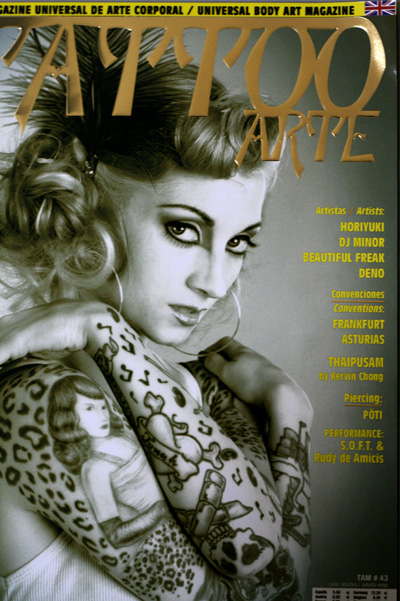
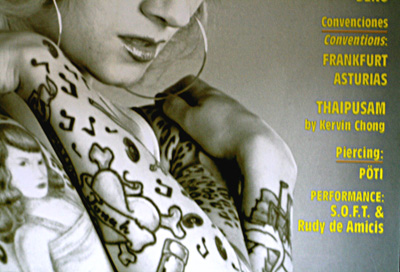
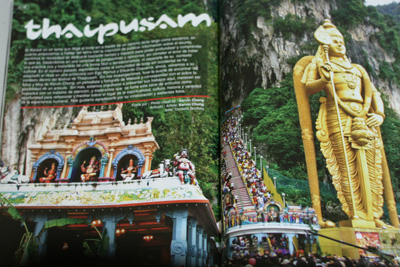
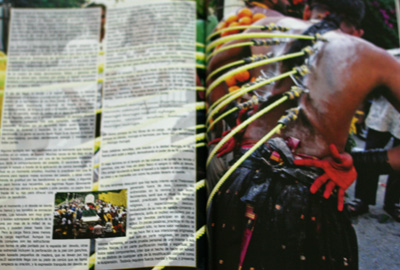
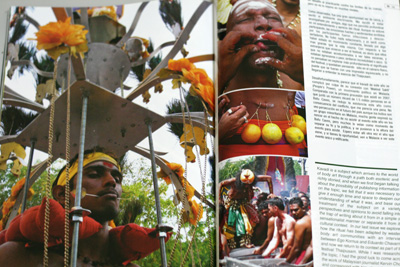



4 comments:
woohoo!! good on ya. :)
i am so proud of u - n u deserve this and more ;)
Good going Kerwin guess where they found you!!
Yes in my
http://kavadinfo.blogspot.com/
Remember your entrance there?
Saludos
Ego
Hey! Thanks for putting this up on your blog! I´m glad customs didn´t confiscate it either...
Once again, thanks for the great work, and for not being scared off by or content... I wish you the best of luck!
Regards,
Cordelia
Post a Comment